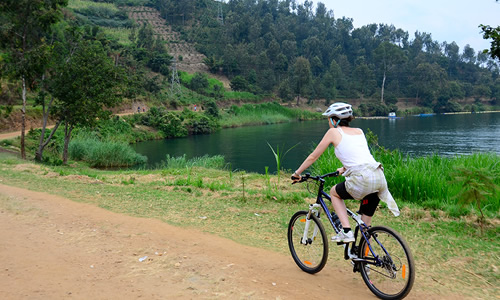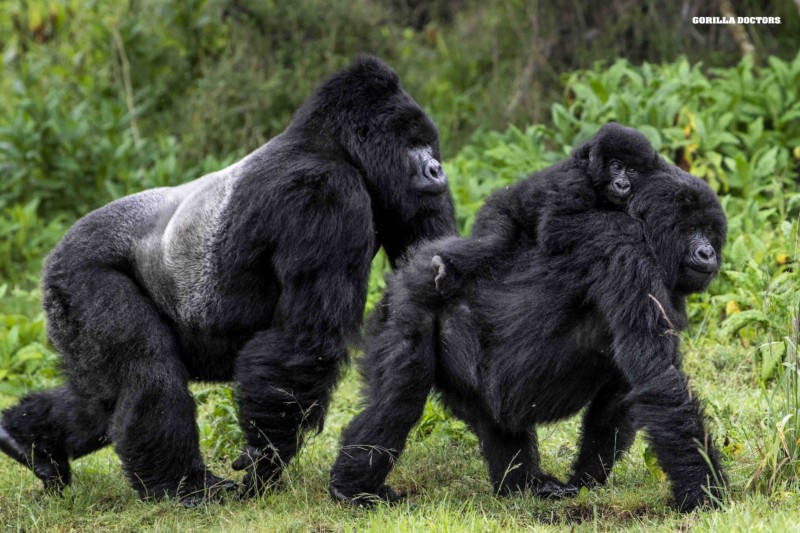When to see flamingos in Lake Nakuru national park
When to see flamingoes in lake national park: Flamingoes are Lake Nakuru National Park’s signature feature, and the majority of visitors go there primarily to observe these lovely birds, which are there in enormous numbers.
There are two primary kinds of flamingoes in this park, the lesser and larger flamingoes, and they are particularly common along the shores of Lake Nakuru. The Lake Nakuru national park is notable for the thousands of flamingoes that congregate about the lake’s shoreline, giving the lake a pink hue.
Flamingoes are numerous at Lake Nakuru National Park because of the lake’s availability enough of algae, which thrives in the lake’s warm waters. Flamingoes feed on this much algae.
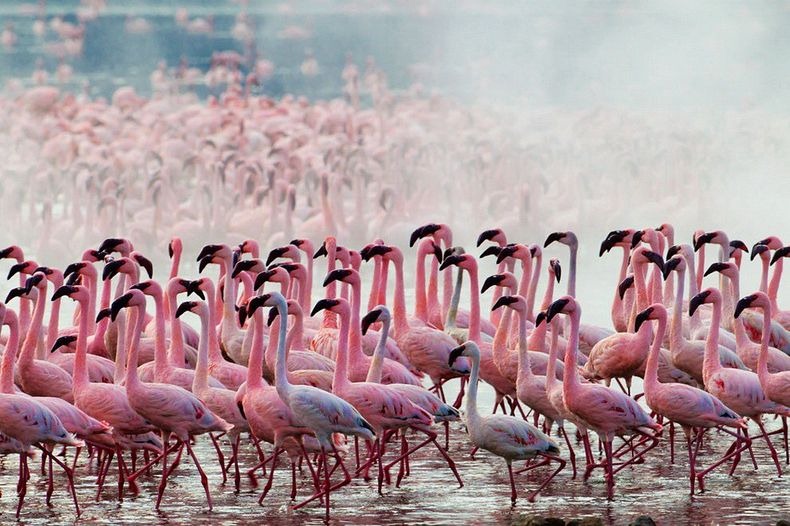
Information about flamingos
A vast group of brightly colored wading birds in the Phoenicopteridae family, flamingos often live in alkaline and saline lakes and lagoons, with Lake Nakuru being one of them. With the exception of the Andes, where they reside in icy alkaline lakes at a height of 14,000 feet (4250 meters), where they can be found on the African continent, flamingos prefer to live in hot, dry environments and shun chilly, misty forests.
Greater and lesser flamingos are two different species of flamingos, and they differ in size. The greater flamingo is larger than the smaller flamingo.
Great Flamingos
Greater flamingos, also known as Phoenicopterus Roseus, are physically much larger than lesser flamingos; while standing, they are almost 6 feet tall. Greater flamingos have a line of vivid coral pink in the folded wing and seem pale pink or white from a distance.
Greater flamingos feed in the bottom and deep seas on quite large organisms.
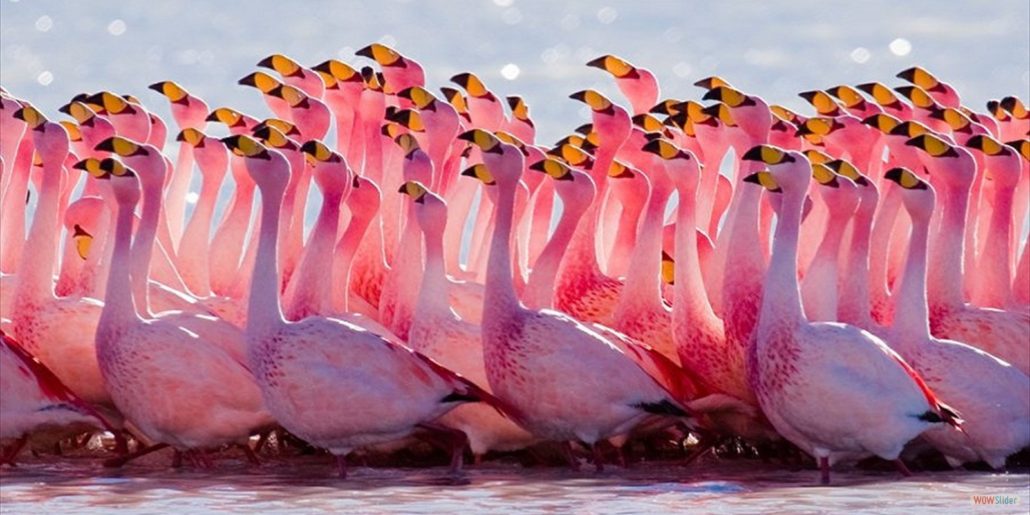
Lesser flamingos
The smallest and most common species of flamingos are known as lesser flamingoes, or Phoeniconaias minor. These birds have pinkish-white plumage and inhabit the borders of alkaline lakes and lagoons.
Lesser flamingos feed on the surface and can feed while swimming or strolling as long as the water is calm. These flamingos mostly filter minute or microscopic plant life from dirt and water (They do not feed in rough water).
Flamingoes prefer to breed on soft mud, where they create distinctive molts that are typically 6 to 18 (15-46 cm) high and have a hollow aperture at the top.
Best time to see flamingoes.
In the Lake Nakuru national park, flamingos can be observed in enormous numbers during the rainy season as well as when it has ceased raining. Flamingoes are visible during this time due to the abundance of blue algae on Lake Nakuru, which increases after rain or during the rainy season.
The flamingo numbers on the shoreline of Lake Nakuru are at their lowest during the months before to the rainy season as a result of the lake’s lower levels of blue algae, which forces the birds to move on to other lakes in the area in search of food. A large population of flamingos can be spotted on the shoreline of Lake Nakuru during the dry season due to the amount of algae.
In conclusion, the months of July, August, September, December, January, and February are the greatest times to watch flamingoes in Lake Nakuru National Park. The flamingos are still visible in other months of the year, though.
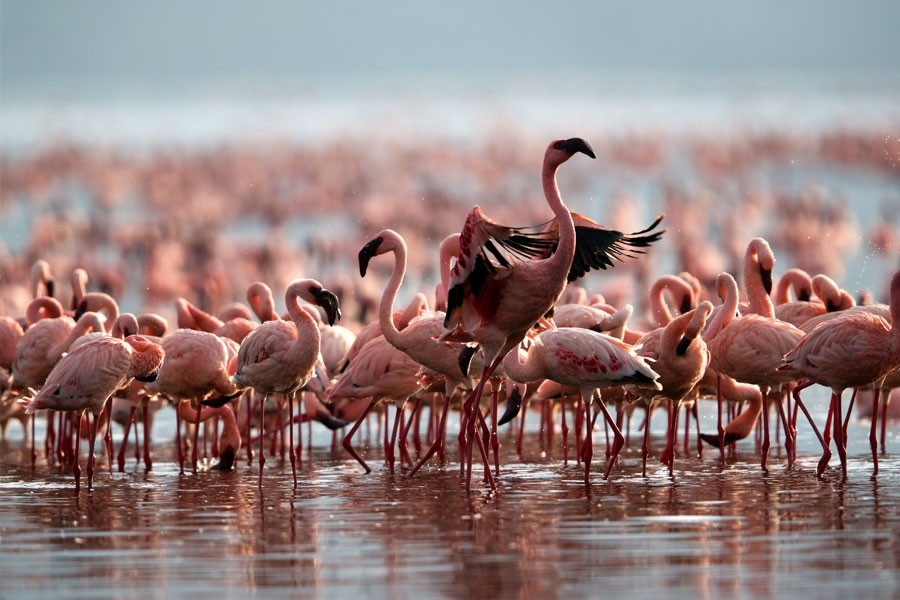
Nakuru Lake
One of the saltwater lakes in the Great Rift Valley of Eastern Africa, Lake Nakuru has a surface area of 5 to 45 square kilometers with an average depth of 0.30 meters. It is located at an elevation of 1,754 meters above sea level.
About Lake Nakuru National Park
One of Kenya’s most beautiful and well-liked safari locations is Lake Nakuru National Park, which is also home to a significant number of rhinos and is also recognized as one of the country’s top birding locations with over 400 different species of birds.
Birds of and wildlife species at lake Nakuru National park
More than 400 bird species have been identified in the Lake Nakuru National Park, including flamingos, the Abyssinian thrush, the Arrow-marked babbler, the bateleur, the black-tailed godwit, the black-winged lapwing, the Brimstone canary, the Brown-backed scrub robin, the crab-plover, the Eastern imperial eagle, the European roller, the grey-crowned crane, the grey-headed woodpecker
The Lake Nakuru National Park is also home to 56 different kinds of animals, including lions, giraffes, impalas, giraffes, white rhinos, and waterbucks.

